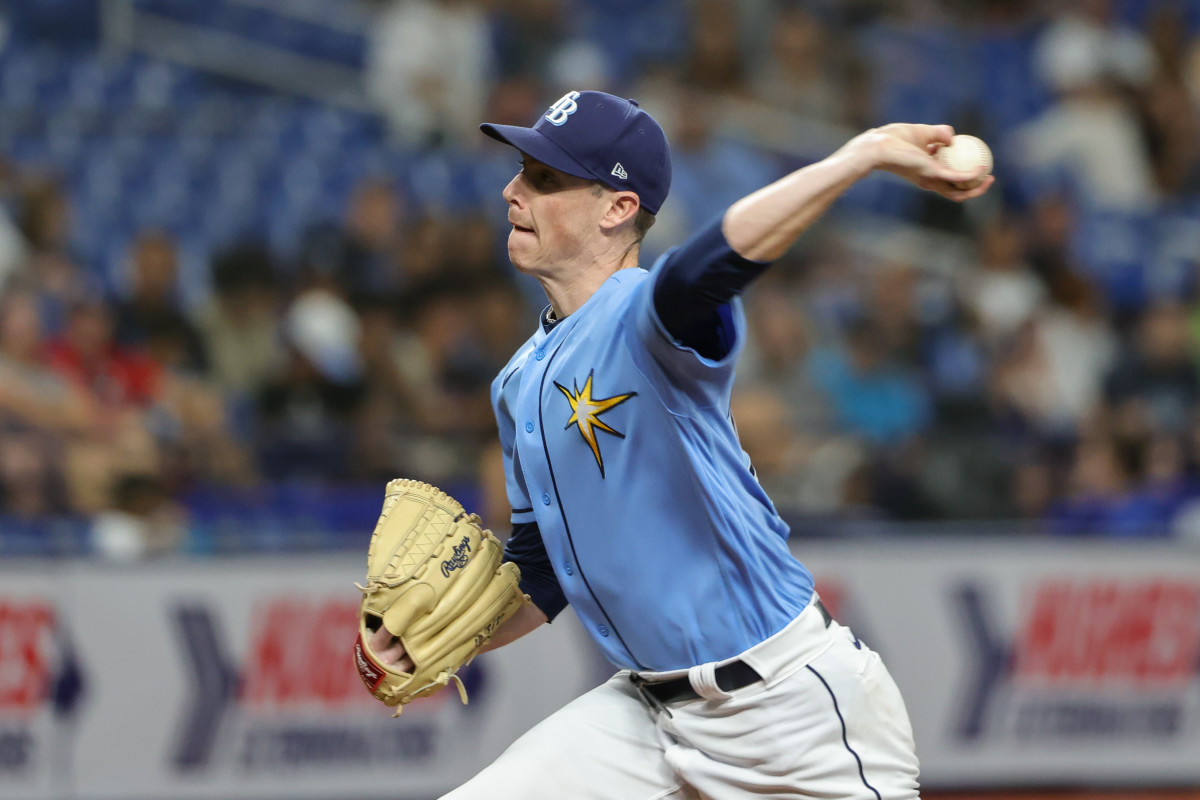Analyzing What the Royals Will Get From Ryan Yarbrough
The Kansas City Royals' signing of Ryan Yarbrough was predictable on almost every front. Yarbrough was going to be cheap, he has connections to Matt Quatraro and his skill set as a pitcher makes too much sense to play at Kauffman Stadium. While it may have been predictable, though, Yarbrough is coming off back-to-back seasons that were not great compared to the start of his career.
Going into 2021, Yarbrough was projected to have another solid campaign after a shortened 2020 season. That isn't what ended up happening, as he put up some career worsts instead. He had an ERA above five and a career-low K/9 of 6.79, as well as giving up 1.45 HR/9, another career-low. 2021 was also Yarbrough's career high in games started at 21, as he's never started more than 14 in any other season.
Two things that stood out for Yarbrough in 2021 were his starter/reliever splits and home/away splits. He was better as a reliever (small sample size) and better at the friendly confines of Tropicana Field, albeit not much better. 2021 wasn't exactly a great showing for Yarbrough, but how did he do in 2022?
Yarbrough was a 0.0 fWAR player. Similar issues arose for him in the 2022 season, as he gave up too many home runs at a 1.35 HR/9 and he gave up more walks with a 2.48 BB/9. That isn't necessarily bad, but it could be an issue if it rises again. Another issue that came up was his WHIP. In 2022 it was 1.38, a career-high, and that was spearheaded by his BB/9 and his .305 BABIP. Perhaps Yarbrough was a tad unlucky, but it still isn't ideal.

Let's look into those splits from before. In 2022, Yarbrough was pretty evenly split as a reliever (39.2 IP) and a starter (40.1 IP), and the splits are also even with each other for better and worse. As a starter, he was an average No. 5 piece with a 4.46 ERA and a wOBA of .323. In relief, he had a 4.54 ERA and a wOBA of .368. Another issue Yarbrough had as a reliever was giving up home runs, giving up nine compared to three as a starter and he let opponents hit nearly .300 against him.
Although Yarbrough's 2022 was far from what was expected, there are still some numbers that look good. One positive is his through-the-order splits. Beginning with his starting splits, Yarbrough struggled with the first time through the order, giving up more hits and walks. He steadily got better through the game, but he was just average.
As a reliever, he showed some potential. In his first time through the order, Yarbrough had a 3.18 ERA, a 7.15 K/9, a 1.99 BB/9 and a LOB% of 95.5. The main issue, again, was that he gave up home runs, as that was close to two HR/9 at 1.99. Coming to Kauffman Stadium will probably help those numbers out, but let's get into some more in-depth issues Yarbrough has had.
To start on a positive note, Yarbrough is a soft contact merchant with an average exit velocity of 85.1 mph — ranking in the top 3% of the league. This also puts him in the top 6% in the league for hard-hit%, which for him is at 31.0. This is really good for a pitcher who pounds the strike zone like he does. With that said, how did he have such a down year in back-to-back seasons?
The main reason is that his two bread-and-butter pitches haven't been great, according to Baseball Savant's run values. Yarbrough's cutter and changeup have both been terrible in the past two seasons, as his cutter had respective run values of 11 and 10 while his changeup had run values of 10 and 4. These aren't good numbers for a pitcher who goes to these offerings over 55% of the time. One bright spot for this, however, is with his cutter. The expected numbers for it indicate that he got unlucky, and the average exit velocity on it was 83.6 mph.
Yarbrough has started throwing his curveball more than his changeup, and that produced some good results. Throughout his career, he's gotten good results with his curveball as they always have produced a negative run value. It is also pretty much the lefty version of Zack Greinke's curve.
Ryan Yarbrough has a couple of things to work on once the season starts, mainly honing his pitches and not giving up as many home runs, but he could also start transitioning toward being a groundball pitcher given his repertoire. The Royals signed an arm that could help both the rotation and the bullpen, as he is a hybrid pitcher, and he could even have a trade market down the road depending on how well he plays.
